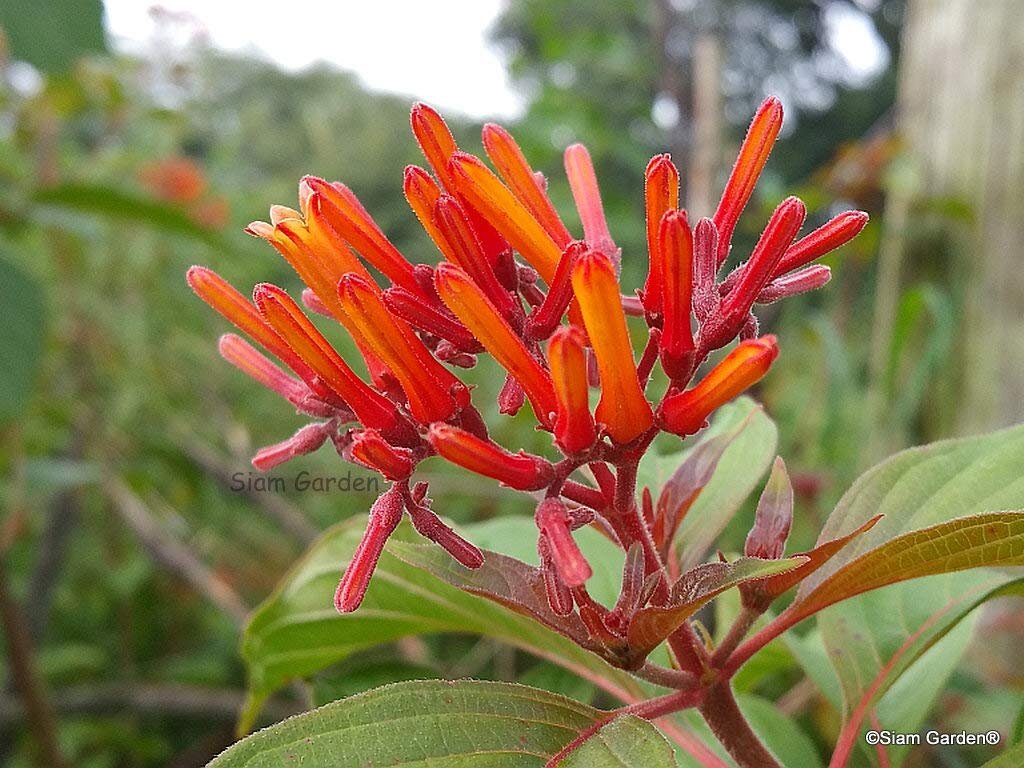Hamelia patens, Firebush
/Hamelia patens, also known as firebush, hummingbird bush, or scarlet bush, is a perennial shrub native to Mexico and south Florida (Meerow, 1999, Welch 2009). Hamelia patens are in the madder or coffee family (Rubiaceae), which is known for having trees, shrubs, and herbs that display simple, opposite leaves. In the southern U.S., it is especially good at handling the summer heat well (Welch, 2009).It is also showy during the winter months due to it being evergreen in hardiness zone 9 or above; therefore it is a plant that can remain showy for the entire year (Christman, 1999). Further north, it can effectively be used as an annual. In Texas, it freezes back in the winter and grows back rapidly in the spring. Hamelia patens is a large shrub to small tree (12-15 ft. in ideal sites, 3-6 in less ideal sites) that displays red flowers for most of the year (Christman, 1999). It has a whorled leaf arrangement, with typically 3 to 7 leaves at each node (Meerow, 1999). In the fall, the foliage of Hamelia patens turns a vibrant red color before freezing back in the winter. The small, fleshy, black fruit of Hamelia patens is safe for human consumption, and is even known to attract birds (Meerow, 1999). Although it can do well in full sun, Hamelia patens are adapted to grow well in the shade. (Meerow, 1999). It is also drought resistant, so it is suitable for dry sites with well-drained soils (Christman, 1999). Hamelia patens is very intolerant of salt. It grows from clumpy stems, and the stems and branches are reddish-brown in color and medium in thickness. Hamelia patens is best used as a standalone shrub, especially in butterfly or hummingbird gardens. It can also do well in a pot, although it should most likely be brought indoors during the winter. It can be especially attractive when planted near plants that contrast well with its overwhelmingly red color. Hamelia patens have many other uses as well. In Mexico, the fruit has often been used to make a fermented drink. Natives in tropical America use extractives from the leaves for all sorts of medicinal uses, including rash treatment, skin fungus treatment, sores, and insect bites or stings. Modern research has shown that there are antibacterial and antifungal properties within the plant. There are also properties within the stems that have been used for tanning treatments and lotions (Christman, 1999). Hamelia patens is a great plant that can grow in a variety of conditions, and could be a great part of any garden. Due to its drought tolerance, it can be used both in dry gardens and in well irrigated gardens, which allows a lot of variety with its use. Hamelia patens is a gorgeous shrub that should be used more often in many landscapes.
Sources:
Christman, S., 1999. Floridata. [online] Floridata.com. Available at: <https://floridata.com/plant/174> [Accessed 18 September 2020].
Meerow, E., 1999. FPS-237/FP237: Hamelia Patens Firebush, Scarlet Bush. [online] Edis.ifas.ufl.edu. Available at: <https://edis.ifas.ufl.edu/fp237> [Accessed 18 September 2020].
Welch, Dr. William C., 2009. “Hamelia Patens.” Horticulture Update, aggie-horticulture.tamu.edu/newsletters/hortupdate/2009/jun09/Hamelia.html.
Overall red appearance of Hamelia patens.
Flower of Hamelia patens.
Potted Hamelia patens.
Light-colored foliage of Hamelia patens ‘Lime Sizzler'.






